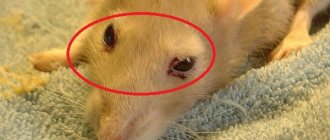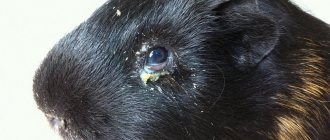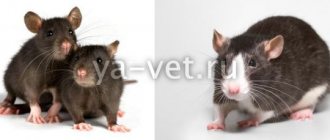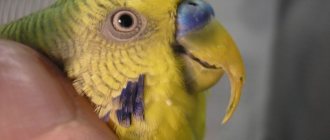Djungarian hamsters are domestic miniature, decorative rodents. Djungaric hamsters live from 1 to 4 years. Four years of age is considered a rarity among hamsters; such rodents are considered long-lived
.
Djungarians do not like being in sunlight for a long time
; they are negatively affected by loud sound and bright fast clips on television.
Diseases of Djungarian hamsters depend on the conditions of detention. Hamsters require a spacious cage
, since the animals themselves are active animals, and they also do not tolerate the accumulation of garbage and excrement in their habitat.
proper nutrition has a great influence on hamsters . In this way, you can achieve a healthy life expectancy for the animal. Long-term research has revealed that their diet must include vegetables and fruits, namely carrots and zucchini. It is these two food products that contain the very elements that have a positive effect on the digestive system of Djungarian hamsters.
Main diseases and their causes
Hamsters are susceptible not only to specific diseases that are characteristic of this particular type of rodent, for example, inflammation of the cheek pouch, but can also be infected with viruses, bacteria, and parasites. It is worth noting that most diseases of Syrian and Djungarian hamsters most often occur due to the fault of the owners. Thus, drafts can provoke colds, and an unbalanced diet leads to the development of hypo- and vitamin deficiencies, and can cause disruptions in the gastrointestinal tract and endocrine pathologies. Deficiency of vitamins, minerals, amino acids, and poor-quality feed weaken the animals’ immune potential and resistance.
Predisposing factors that can cause diseases in hamsters include:
- poor-quality diet with poor nutritional ratios;
- poor living conditions (cramped, dirty cage);
- unsuitable indoor microclimate;
- frequent stress, fear, emotional stress;
- improper care of pets.
Hamsters are susceptible to injury and often suffer from metabolic disorders and digestive processes in the body. Dzungarians and Syrians suffer from viral, bacterial, parasitic diseases, as well as non-communicable diseases. Tumors, neoplasms, and allergic manifestations (dermatitis, dermatoses) are often detected in hamsters.
Hypovitaminosis
Important! An improperly equipped cage can lead to injury to a small pet, causing dislocations, sprains, and torn ligaments. When two or more hamsters are kept in one cage, the rodents will fight for territory in real hamster fights. Moreover, such battles can often cause the death of babies or weaker individuals.
Common diseases of Djungarian and Syrian hamsters:
- obesity, diabetes;
- inflammation of the cheek pouch;
- abscesses on the paws;
- mechanical injuries (dislocations, fractures, sprains);
- ophthalmological diseases (keratitis, conjunctivitis);
- respiratory diseases of various etiopathogenesis;
- viral-bacteriological, invasive diseases;
- dermatophytosis;
- dermatitis, dermatoses, mycoses;
- colibacillosis;
- helminthic infestations;
- tularemia;
- false rabies (Aujeszky's disease);
- lymphocytic choriomeningitis;
- dental diseases.
Note that some viral, bacterial infections, parasitic diseases of dwarf hamsters and Syrian hamsters are dangerous for people. A person can become infected with rabies, salmonellosis, tularemia, dermatomycosis, campylobacteriosis, and plague from a rodent.
Inflammation of the cheek pouches in a hamster
If you purchase hamsters in pet stores, from trusted breeders, create optimal living conditions for the pet, and do not neglect the rules of hygiene, many of the diseases that hamsters suffer from can be avoided.
Antihyperglycemic drugs for diabetes in hamsters
Many diabetic hamsters maintain their diet on their own. This process is regulated by nature itself and the animal’s internal sense of self-preservation. Sometimes your veterinarian will prescribe additional treatments, such as fenugreek (Trigonella) or other specific medications, dietary supplements, and injectable homeopathy. Such drugs should be taken only with prior approval, as side effects can easily be caused.
Fenugreek is an herbal supplement that is available in some stores and green pharmacies. It has been shown to lower blood glucose levels in humans. Often this remedy is sold in seed form or as a powder placed in a capsule. Many hamsters may refuse to eat its seeds, in which case it is possible to make a tea from the powder or seeds (pre-grind the seeds), which may smell like curry. This tea or decoction is used to feed animals.
Glipizide (Minidiab, Glibenez, Glucotrol, Glidiazinamide, Melizide, Menodiab, Mindiab, Minibetic, Minodiab) is a drug that can only be purchased with a prescription and in agreement with a doctor or veterinarian. It is used to treat humans and cats. Effective studies have been conducted proving the positive effect of using Glipizide for Djungarian hamsters with diabetes. You need to be very careful with the dose, as sugar can drop significantly and sharply and liver problems will develop. There is no specifically defined recommended dose for hamsters. The amount of drug should be calculated using the cat dose and taking into account the smaller size of the hamster. Typically, you need to start with one dose (calculated by the veterinarian), increasing it every other day in accordance with the individual characteristics of the animal and the severity of its disease at the moment. Such calculations are performed by a veterinarian-ratologist, sometimes even based on his own experimental experience. The drug is available in tablet form, which must be crushed and diluted in a carefully measured amount of water to form the correct concentration. An experienced veterinarian who frequently uses Glipizide has no difficulty in calculating dosages.
Let us repeat, this drug is quite effective, but is a last resort in the treatment of diabetes in hamsters. When using Glipizide, we recommend, just in case, to have at least a small amount of honey or syrup in the house in case of resuscitation in case of a sharp drop in the hamster’s sugar .
Symptoms of diseases
How can you tell if your hamster is sick? This question interests many breeders of small pets. A healthy hamster has beautiful shiny fur, leads an active lifestyle, especially at night, and shows interest in the world around it. The animal eats food with appetite, makes supplies, and arranges its home. The Djungarian, the Syrian, has clear, clean eyes and an expressive gaze.
Important! You can understand that a rodent is sick not only by external signs, but also by the changed behavior of the hamster.
Main symptoms of diseases:
- decreased activity, lethargy, apathy;
- deterioration of fur condition (wet fur);
- severe itching;
- the appearance of scratches, bald patches, wounds, ulcers on the body;
- discharge from the nose, eyes;
- increased thirst;
- allergies, skin rash;
- bowel dysfunction (diarrhea, constipation);
- frequent urination;
- pallor, cyanosis of mucous membranes;
- sticky eyelids;
- the presence of blood and clots in the urine;
- disturbance of breathing, heart rhythm;
- accumulation of wax and dirt in the ears;
- yellowness, peeling of the skin;
- loss of cheek pouches;
- impaired coordination of movements;
- boils on the body.
In case of injuries or sprains, the hamster limps, sits constantly in the house or hides in the corner of the cage. The rodent loses a lot of weight or, on the contrary, gains weight and gains weight too quickly.
Ringworm in a hamster
Advice! Take a good look at your pet's home. If a hamster suffers from indigestion, cystitis, or endocrine pathologies, an unpleasant specific odor appears, the feces will be liquid, and the space will be filled with excrement.
If the hamster has lost weight, refuses its favorite treats, has watery eyes, swollen eyelids, the pet has become inactive, shows aggression, is breathing frequently, or other symptoms uncharacteristic of a healthy animal are noticeable, you should not ignore the problem.
If your dwarf or Syrian hamster is sick, do not self-medicate. If you discover that the rodent is sick, take it to the veterinary clinic or call a veterinarian at home. The choice of treatment methods depends on the root cause that provoked the soreness.
Life expectancy predictions for diabetes mellitus in hamsters
According to many studies, diabetic hamsters of the Chinese genetic group, mainly Djungarian and Campbell, can live a normal life. A study of 80 diabetic hamsters found that most lived to 12-24 months, although younger hamsters had more severe diabetes at diagnosis. Campbell's hamsters tend to be less resistant to diabetes.
Based on research, two main forms of diabetes have been identified in hamsters. Young experimental hamsters (with diabetes diagnosed between 6 and 16 weeks of life) required drug treatment 2-4 weeks after diagnosis, became ketotic (presence of ketones) after 1-2 months, died after 5-6 months after diagnosis (at the age of 6-10) months. Older test hamsters (with diabetes diagnosed between 6 and 16 months of age) required drug treatment 1–3 months after diagnosis, became ketotic at 3–6 months, and died 3–9 months after diagnosis ( at the age of 19-26 months).
As hamsters' diabetes , it becomes difficult for them to drink water from a ball bottle. Considering this, it is better for them to use a bowl of water.
Unless a diabetic hamster is showing symptoms and has no glucose in the urine (although it may already be present in the blood), it should not be treated because the hamster needs constant access to water and without it the hamster can very quickly become ill or even go into a coma. due to dehydration or too high (or too low) blood sugar.
Diabetic hamsters should not be used for breeding as diabetes can easily be passed on to offspring. You need to regularly check the urine of all hamsters, monitor their health and carefully monitor your pets, especially if they are used for breeding purposes. If, when choosing a hamster, the breeder warned in advance that the animal is not used for breeding, remember - this animal is at risk. It needs to be tested regularly. If you notice that your hamster is unwell and exhibiting the signs described in the list of symptoms, do not delay in visiting your veterinarian. Only prevention is a guaranteed means of combating diseases. Remember this and be responsible to the animals you keep.
Bacterial and viral diseases of the hamster
Hamsters are very susceptible to diseases caused by pathogenic microorganisms, viruses, and bacteria. Infection is possible by contact, aerogenous, nutritional means, or by eating low-quality feed. Some diseases of bacterial etiology can be transmitted to hamsters from humans and other pets.
Colibacillosis
The infection is caused by Escherichia coli, which parasitizes the gastrointestinal tract of animals. This disease of dzhungarik is also known as “wet tail”, as the sore is manifested by severe diarrhea.
Other symptoms of colibacillosis include:
- decreased, lack of appetite;
- weight loss;
- restless behavior;
- depression, lethargy, apathy;
- drowsiness;
- the presence of wet fur near the anus.
Colibacillosis
Hamster feces with diarrhea have a watery consistency. The hamster constantly curls up into a ball, hides in secluded places in the cage, and looks untidy.
The disease is characterized by an aggressive course and spreads very quickly, therefore, when keeping several animals together in a cage, you must immediately move the sick pet to another home. The disease can be cured only in the early stages of development.
Diplococcosis
An infection of the respiratory tract caused by round microscopic bacteria called diplococci. The main symptoms are lethargy, apathy, decreased activity, discharge from the nose and eyes. If the infection is severe, the dzhungarik refuses food and treats.
The disease requires immediate treatment using special serums. If therapy is not started, the pet’s death occurs on the second or third day.
Salmonellosis
The disease is caused by pathogenic rod-shaped microorganisms - salmonella. With this infection, hamsters experience foamy diarrhea, weakness, apathy, and pale mucous membranes. A sick hamster refuses food, hides in a dark corner, sits motionless, showing no interest in the world around it. The rodent's tummy is enlarged. In the stool you may notice bloody clots, threads, particles of undigested food, and mucus.
Salmonellosis in a hamster
Viral pneumonia
The disease develops against the background of weakened resistance and weakened immune potential. Prolonged hypothermia, chronic otitis, hypo-, avitaminosis can also cause the development of viral pneumonia in animals.
The disease is manifested by abundant mucous, mucopurulent discharge from the eyes, nose, refusal to feed, coughing attacks, and shortness of breath. The hamster has a wet muzzle, hoarse, rapid breathing, and pale mucous membranes. If he shakes his head, his ear, wax has accumulated in the ears, there are crusts and an unpleasant odor emanates, most likely the animal is sick with otitis media, the cause of which is a respiratory illness.
Pneumonia develops against the background of ophthalmological diseases or can provoke eye and ear diseases. With timely treatment, the hamster recovers completely within a week.
Aujeszky's disease
Pseudorabies is a deadly viral disease. The disease manifests itself as severe nervous disorders. The hamster becomes restless and may show aggression. Attacks of excitement are replaced by complete apathy. A sick pet has poor coordination of movements. Muscle spasms and cramps are noted. Death occurs due to paralysis and severe exhaustion. Treatment is carried out with special serums.
Lymphocytic choriomeningitis
One of the viral infections that poses a danger to humans. May be latent (asymptomatic). The main signs are sudden weight loss, decreased activity, refusal to feed, frequent bowel movements, and urination. Most often, the virus is transmitted from a hamster to newborn hamsters. In pregnant females, the disease provokes spontaneous miscarriages.
The infection is incurable, so if your pet is infected, it will unfortunately have to be euthanized.
Diet for diabetes mellitus in hamsters
The diet of a hamster with diabetes should consist of more protein and fiber than in a regular diet, but the percentage of fat and carbohydrates should be reduced.
Any carbohydrates in the diet (as they should not be eliminated completely) should be in a less easily digestible form, such as oat bran, whole grains, pasta and brown rice. Unfortunately, today such special mixtures for diabetic hamsters are not produced on an industrial scale. Although some brands (Harry Hamster, Harry Hamster and Burgess, Dwarf Supahamster) make mixtures without added sugar. We recommend preparing your hamster mixture yourself. It is advisable to use flax, hemp, millet and oat seeds in mixtures. If the mixture suits the hamsters, their fur will become smooth and shiny, which will indicate improvement.
We previously wrote about proper nutrition for a hamster. We recommend that you read the article.
Here is a list of foods high in protein:
- dog biscuits;
- tofu;
- cooked (boiled) chicken or turkey;
- boiled eggs;
- flax seeds;
- unprocessed low-fat cheeses;
- boiled tuna (soak in water several times, drain the water before giving to the hamster).
High fiber foods:
- hay (soft varieties only);
- alfalfa;
- vegetables (eg cucumbers, broccoli, cauliflower, celery).
Remember, all extra treats for hamsters should be chosen with care. You should avoid simple carbohydrates, including fructose - raisins, corn, carrots and fruits of any kind.
Oral and dental diseases
Hamsters, like any rodents, grow their incisors throughout their lives, so owners should pay special attention to oral hygiene and the animals' teeth. If the pet does not grind down its teeth, this will lead to injury, damage to the oral mucosa, the development of acute inflammation, the formation of abscesses, and abscesses.
Pathologies and dental diseases in Djungarians and Syrians are manifested by redness of the mucous membranes, hypersalivation, decreased appetite, weight loss, abnormal growth, deformation of the incisors, and inflammation of the cheek pouches.
Inflammation of the cheek pouches is one of the most commonly diagnosed pathologies. It is characterized by inflammation, prolapse (prolapse), and the appearance of pathological formations. The disease develops due to injury to the oral mucosa. With this pathology, the animals behave restlessly, rubbing their cheeks and muzzle with their paws. Appetite decreases. Saliva flows from the mouth. As a rule, the pathological process affects the inner surface of the cheeks.
Long incisors provoke dental diseases in hamsters
To relieve inflammation, you need to rinse your pet’s mouth with an antiseptic solution or chamomile decoction. To normalize digestion, give your hamster probiotics and enzymes.
For neoplasms, surgical treatment, restorative, and symptomatic medications are prescribed.
If your hamster has inflamed cheek pouches, treatment should be carried out by a veterinarian. The specialist will carefully turn out the cheeks and clean them of food debris. Inflammation will be relieved by bactericidal drugs, antiseptics, and medications for local and general treatment. After therapy, the hamster must be kept on a fasting diet for 12–14 hours.
Causes
The causes of tumors can be different. These include bites received during fights, various scratches received when the pet collided with sharp corners of furniture, and other wounds. The cause of the tumor may be poor quality food, improperly removed bedding in the cage, draft or stress. It is necessary to protect them in every possible way from too much noise, from hypothermia, and from aggressive environmental influences.
What to do if you find a tumor in your hamster?
TAKE YOUR HAMSTER TO THE DOCTOR AND DO NOT READ ARTICLES ON THE INTERNET. IT IS IMPORTANT!
If a benign tumor is discovered in a pet, then you can resort to preventive measures; if a malignant tumor is discovered, then you need to resort to measures to remove it. The growth can only be removed through surgery. Professional clinics will create all the conditions for comfortable rehabilitation of your pet, as well as to prevent the recurrence of inflammation.
The sooner the owner contacts the veterinarian, the faster the doctors will remove the tumor, and the pet will suffer less. Painful sensations in hamsters are due to the fact that the wound grows, the skin bursts, and pus cells form ulcers on the body. Very often, the animal, unable to bear the pain, tries to chew off the wound. But such an “operation” will only lead to unnecessary blood loss and, as a result, death.
If a pet develops cancer, then the only measure that should be used in such a situation is amputation. Of course, when it comes to soft tissue tumors, the best outcome is euthanasia.
For the operation, inhalation anesthesia is used, which helps reduce pain during the post-rehabilitation period. It is important to ensure that the rodent does not get hypothermia, otherwise re-infection of the tissues cannot be avoided. During the post-rehabilitation period, you cannot keep your pet on a hungry diet. Otherwise, the wound will heal longer than usual.
It is important to know that after removal of the cancer, the hamster can also die due to the spread of metastases. They can damage internal organs, such as the lungs and liver. Cancer can damage your pet's internal organs. This is evidenced by the curvature of the body.
Parasitic, fungal, dermatological diseases and symptoms
Hamsters, regardless of breed, often suffer from parasitic and fungal diseases. Djungarians are diagnosed with lichen, dermatophytosis, and trichomoniasis. The main manifestations of mycoses are severe itching, restlessness, deterioration of the coat, the appearance of rashes on the body, scratching, wounds, and long-term non-healing ulcers. With dermatophytosis, the skin acquires a yellowish tint and is very flaky. If treatment is not started, pathogenic flora penetrates into wounds and scratches, which provokes inflammation in various structures of the dermis.
Wet eczema in a hamster
Important! If a hamster is sick with a parasitic or fungal disease and is kept in the same cage with other rodents, immediately isolate the sick animal and disinfect the pet’s home.
Hamsters are susceptible to dermatitis, dermatoses of various etiologies, as well as allergies. Deterioration in the condition of the coat, partial or complete baldness is provoked by frequent stress, deficiency of vitamins, minerals, external parasites, fungi, and substances of a toxic nature.
Your veterinarian will tell you how to treat mycoses. The pet will be prescribed fungicidal, antibacterial agents, solutions (Miramistin, Chlorhexidine), as well as antiparasitic shampoos.
What diseases are transmitted to humans
Particularly dangerous diseases that people can become infected with are most often infectious. These are rare phenomena, however, it is better to familiarize yourself with them:
- Tuberculosis. Its symptoms include wheezing and rapid weight loss.
- Rabies is a sudden change in behavior, sudden aggression and a loud squeak.
- Mites and fungal infections are accompanied by partial alopecia - baldness, itching and scratching wounds.
Antibiotics are always included in treatment – both for animals and humans. Remember that medications intended for humans are not suitable for pets.
There is a particularly great danger of miscalculating the dose of the drug used. In terms of the weight of the hamster, the medicine itself remains in hundredths, or even less. The drug must be injected into the withers area, pulling back the skin above it.
Neoplasms, tumors
Tumors (malignant, benign), pathological growths on the body, legs. ears is a fairly commonly diagnosed pathology in rodents, which can develop for a variety of reasons. Bumps can appear due to injuries, severe bruises, or falls from a height. To begin treatment, you need to establish a diagnosis, so take your pet to a veterinarian.
For benign and malignant tumors, surgical treatment will be prescribed. If the cancer is localized in a hard-to-reach area (oral cavity), or the tumor has metastasized, veterinarians recommend euthanizing the hamster, since no treatment method will give the desired result.
Treatment
To carry out the correct treatment, you need to pay attention to the condition of the tumor. If the area is not very red or swollen, then most likely surgery will not be required. If we are talking only about the inflammatory process, then it is best to prescribe a course of antibiotics or drugs that block tumor growth. If you take the medications on schedule, the abscess will not develop.
If the tumor has become too large, then you need to go to a hospital. In the hospital they must clean the wound and treat it with special compounds. Sometimes it becomes difficult for your pet to move without additional drainage. In such situations, you need to install a special drainage on the baby’s body. It is not possible to make such drainage at home.
If the wound breaks out on its own, then the breakout site should be treated with furatsilin and hydrogen peroxide. Here you don’t have to take your pet to the clinic, but you should definitely consult with a specialist. This is necessary to prevent your pet’s blood from becoming infected. Some infections can be fatal.
Eye diseases and their treatment
Small animals often suffer from ophthalmological diseases. Allergic, serous, purulent conjunctivitis, cataracts, glaucoma, and uveitis are noted in hamsters. In these diseases, blepharospasm, lacrimation, swelling, swelling, and sticking of the eyelids are observed.
Treatment should begin immediately as soon as you notice the first symptoms. Do not forget that eye diseases can provoke not only a deterioration in visual function, but also cause complete or partial blindness.
Conjunctivitis
In medical therapy, the choice of methods depends on the stage, nature of the disease, and the root cause. Solutions for washing the eyes and ophthalmic drops may be prescribed.
When to sound the alarm?
Few owners notice changes in the condition of their pets in the early stages of the disease. But early diagnosis is the key to a speedy recovery of the animal. How can you tell if your pet has health problems? Of course, conduct an external examination and observe the fluffy for a couple of days. You should:
- assess the animal’s activity: if Homa suddenly becomes lethargic, he is clearly unwell;
- watch your appetite. Healthy animals love to snack. If a pet refuses even its favorite treat, it is seriously ill;
- check the weight. An adult Syrian hamster must weigh at least 90 g; for all other breeds, including Djungarian hamsters, the weight must not be less than 30 g;
- examine your pet's face. The eyes should be shiny, without cloudiness or mucus. Nose – cool, without discharge. Check your ears for flaking. Pay attention to the incisors: they should grow evenly;
- make sure that there are no skin growths or tumors on the neck, armpits and abdomen;
- inspect the butt and the area of fur under the tail, they should not be wet or dirty;
- the living space also needs to be examined: if the rodent has an intestinal disorder, the stool will be liquid, and if it has cystitis or diabetes, you will understand it by the smell.
If at least one sign is detected, it is worth taking the fluffy to the veterinarian so that he can make a diagnosis and prescribe treatment.
Endocrine pathologies, gastrointestinal diseases
Endocrine disorders, metabolic failures, hormonal imbalances, and disruptions in the digestive tract in most cases are provoked by improper feeding of a small pet. Metabolic disorders can also be hereditary.
Among the most common endocrine pathologies in hamsters are:
- diabetes;
- obesity;
- vascular diseases;
- stone disease;
- polycystic ovary syndrome (in females).
Hormonal imbalances in females most often cause frequent childbirth and an unbalanced diet. Hamsters become lethargic or, on the contrary, irritable. The pet's tummy is swollen and the frequency of bowel movements is disrupted. Treatment is surgical.
Gastrointestinal diseases (poisoning, enteritis, food allergies) develop due to a violation of the feeding regime, if the hamster has a poor-quality, meager diet or due to exposure to various toxins on the body. The diseases are accompanied by unstable stools, rumbling in the stomach, decreased appetite, and lethargy. A veterinarian will tell you how to cure a hamster and what to do if the digestive processes are disrupted, having established an accurate diagnosis and cause.
Obesity in a hamster
Features of the body of Djungarian hamsters
Improved metabolism. The hamster consumes large amounts of food because it always expends a lot of energy.
Like all other processes, diseases will develop rapidly in a small organism. For example, if an animal is dehydrated from diarrhea due to some kind of gastrointestinal infection, it can die very quickly.
Burdened by genetics. Diseases such as hereditary diabetes mellitus and obesity appear at an early age due to the frequent crossing of two species - the Campbell hairy hamster and the dwarf hamster.
That is why it is good to know what your pet’s ancestors suffered from. And even better - the confidence that they were healthy!
Other diseases of hamsters
Hamsters are susceptible to cardiovascular pathologies, which can be congenital or acquired. Among Syrians and Djungarians, problems are detected in the functioning of the excretory system (cystitis, pyelonephritis), nervous disorders (encephalitis), which develop against the background of severe stress, due to overheating. It is worth noting that severe fright can provoke paralysis and cause cardiac arrest, which will lead to the death of the hamster.
In any case, if you notice that your pet’s behavior has changed, your pet has become lethargic and inactive, do not ignore the problem. Many hamster diseases can be cured in the early stages of development. Therefore, be sure to show your pet to a doctor or call a veterinarian at home. However, remember that many diseases and pathologies that occur in hamsters are easier to prevent thanks to proper care and maintenance.
We invite you to join our Zen channel and group on VKontakte or Odnoklassniki, where new articles for pet owners are published.
Similar articles:
- The simplest things that can harm a guinea pig
- Djungarian hamster at home: advice for the future owner
- How to organize leisure time for a guinea pig?
The state of the hamster's nervous system
The animals themselves will never let you know that there are any disorders of the central nervous system. Despite this, all you have to do is make loud noises, take your hamster out into a bright light, give your hamster a ride in a car, or disturb his sleep pattern, and your beloved pet will reveal his entire essence, show it in the literal sense.
You may notice baldness, scabies, and even problems with bowel movements. For transporting little friends, there are ways to safely secure them, invented by veterinarians to prevent unnecessary movement.
How can you tell if your pet is sick?
If your pet is sick, he may experience the following changes:
- apathy and lethargy;
- no appetite;
- the wool has become tangled, has lost its shine, is falling out or matted;
- there is discharge from the eyes and nose;
- pollution near the anus;
- constipation and gastrointestinal disorders;
- severe nervousness and aggression of the animal;
- temperature.
Since hamsters have a very fast metabolism, the first symptoms and signs of illness are immediately visible. At the same time, the deterioration of the condition also occurs quickly, which is why it is very important to provide the pet with the necessary help and treatment in a timely manner.
What do healthy hamsters look like?
In principle, it is easy to distinguish a healthy hamster from a sick one. In normal condition, the animal has beautiful, shiny fur, smooth breathing without shortness of breath, and no discharge from the eyes and nose. In terms of behavior, the animals are curious, playful, with a good appetite, and active (if this is the time of wakefulness). It is also very important to assess the condition of the eyes; they should not only be clean, but also clear and shiny. Healthy hamsters have a dry nose.
Specific disease of the Syrian breed.
Among the diseases of Syrian hamsters, “wet tail” stands out, the most typical for representatives of this breed. The disease is very dangerous, but to the delight of breeders and Syrians, it is extremely rare.
Yes, the picture is not the most pleasant, but now you know what a “wet tail” looks like.
Without the intervention of the owner, the animal dies within a few days, and treatment is very difficult for the furry ones. Wet tail is an infectious disease and most often affects young animals. Syrians older than 5 months get it extremely rarely. The first symptoms can be noticed after 2 weeks, including: bloody diarrhea, vomiting and refusal to drink water.
If left untreated, the animal will eventually die from dehydration. The disease is easily transmitted, so it is unacceptable to share healthy individuals with a sick hamster. The probability of survival with an integrated approach to treatment is approximately 50%. But there is good news - after getting sick with “wet tail”, the furry one will receive immunity to it for life.
Why exactly the “wet tail”? Yes, it’s just that the lower part of the body is constantly wet. The poor thing “won’t get off the potty,” if this phrase can be applied to the animal.
Drugs used to treat rodents
Some medications are dangerous for the body of hamsters, so it is better to avoid using them. Among them are Penicillin, Ampicillin, Gentamicin and cephalosporins. It is forbidden to use antibiotics without consulting a veterinarian.
To strengthen the body, pets are given vitamin tablets and liquid concentrates.
Fungal infections are treated with the following drugs:
- Triderm.
- Fluconazole.
- Ketoconazole.
- Griseofulvin.











